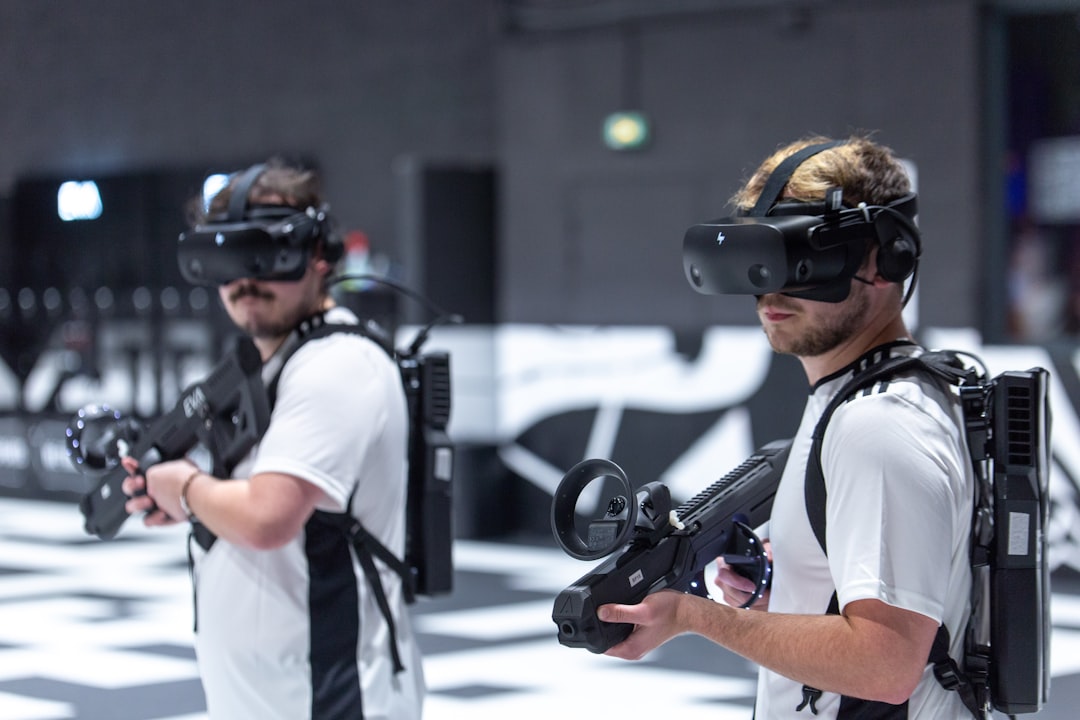The term “Metaverse” has gained significant traction in recent years, often described as a collective virtual space that merges physical and digital realities. It encompasses a vast array of interconnected virtual environments where users can interact with each other and digital objects in real-time. The concept is not merely about virtual reality (VR) or augmented reality (AR); rather, it represents a convergence of various technologies, including blockchain, artificial intelligence, and social media, to create immersive experiences that transcend traditional online interactions.
In essence, the Metaverse is envisioned as a persistent, shared digital universe that exists parallel to our physical world. At its core, the Metaverse aims to provide users with a sense of presence and agency within a digital landscape. This is achieved through avatars—digital representations of users—that can navigate these virtual spaces, engage in activities, and communicate with others.
The Metaverse is not limited to gaming; it encompasses social networking, education, commerce, and even art. As technology continues to advance, the potential applications of the Metaverse are expanding rapidly, leading to discussions about its implications for various aspects of life, from work to leisure.
Key Takeaways
- The Metaverse is a collective virtual shared space, created by the convergence of virtually enhanced physical reality and physically persistent virtual reality.
- Virtual realms have evolved from simple text-based environments to complex, immersive 3D worlds, offering users a wide range of experiences and interactions.
- Navigating virtual realms requires a variety of tools and technologies, including virtual reality headsets, haptic feedback devices, and motion tracking systems.
- The Metaverse has the potential to impact society in various ways, including changing the way we work, socialize, and consume entertainment.
- Virtual economies and marketplaces within the Metaverse are becoming increasingly important, with the rise of digital currencies and virtual assets.
The Evolution of Virtual Realms
The journey toward the Metaverse can be traced back to early virtual environments and online communities. In the 1970s and 1980s, text-based MUDs (Multi-User Dungeons) allowed users to explore fantasy worlds and interact with one another through text commands. These early platforms laid the groundwork for more complex virtual experiences.
The advent of graphical user interfaces in the 1990s led to the emergence of virtual worlds like “Second Life,” which allowed users to create avatars, build environments, and engage in social interactions. This marked a significant shift from text-based interactions to visually rich experiences. As technology progressed, so did the sophistication of virtual realms.
The introduction of VR headsets in the 2010s brought immersive experiences to the forefront, allowing users to feel as though they were truly present in a digital environment. Games like “Minecraft” and “Fortnite” further popularized the concept of shared virtual spaces where players could collaborate, compete, and create. These platforms not only provided entertainment but also fostered communities that transcended geographical boundaries.
The evolution of these virtual realms has set the stage for the Metaverse as we envision it today—a seamless integration of various digital experiences that cater to diverse interests and activities.

To effectively navigate the Metaverse, users rely on a variety of tools and technologies that enhance their experience. Virtual reality headsets, such as the Oculus Quest and HTC Vive, offer immersive environments where users can engage with digital content in a three-dimensional space. These devices track head movements and hand gestures, allowing for intuitive interactions that mimic real-world actions.
Additionally, augmented reality applications, like Pokémon GO, overlay digital elements onto the physical world, creating hybrid experiences that blend reality with virtual content. Beyond hardware, software platforms play a crucial role in shaping the Metaverse. Game engines like Unity and Unreal Engine provide developers with the tools needed to create rich, interactive environments.
These platforms enable the design of complex simulations and games that can be experienced by multiple users simultaneously. Furthermore, blockchain technology is increasingly being integrated into the Metaverse to facilitate secure transactions and ownership of digital assets. Non-fungible tokens (NFTs) have emerged as a way for creators to monetize their work within these virtual spaces, allowing for unique ownership of digital art, collectibles, and even virtual real estate.
The Impact of the Metaverse on Society
| Aspect | Impact |
|---|---|
| Communication | Enhanced global connectivity and collaboration |
| Education | New immersive learning experiences |
| Workforce | Remote work opportunities and virtual offices |
| Entertainment | Interactive and personalized experiences |
| Social Interaction | New forms of socializing and community building |
| Economy | Potential for new business models and revenue streams |
The emergence of the Metaverse has profound implications for society at large. One of the most significant impacts is the potential transformation of how we work and collaborate. Remote work has gained traction in recent years, but the Metaverse could take this a step further by creating virtual offices where employees can interact as if they were physically present.
Companies like Meta (formerly Facebook) are investing heavily in creating virtual workspaces that facilitate collaboration through immersive environments. This shift could redefine workplace dynamics, fostering creativity and innovation while also addressing challenges related to remote communication. Moreover, the Metaverse has the potential to democratize access to information and resources.
Educational institutions are exploring ways to leverage virtual environments for immersive learning experiences. Imagine students attending a history class in a virtual recreation of ancient Rome or participating in science experiments in a simulated laboratory. Such experiences could enhance engagement and understanding while making education more accessible to individuals regardless of their geographical location.
Virtual Economies and Marketplaces
The Metaverse is not just a social space; it is also emerging as a vibrant economic ecosystem with its own marketplaces and currencies. Virtual economies are being established within these digital realms, allowing users to buy, sell, and trade digital goods and services. For instance, platforms like Decentraland enable users to purchase virtual land using cryptocurrency, creating opportunities for real estate development within the Metaverse.
This has led to a burgeoning market for virtual properties, where individuals can invest in digital assets that may appreciate over time. Additionally, creators are finding new avenues for monetization through NFTs and other digital assets. Artists can sell their work directly to consumers without intermediaries, while game developers can create unique in-game items that players can buy or trade.
This shift toward decentralized economies empowers individuals and fosters creativity by providing new revenue streams for creators across various industries. However, it also raises questions about regulation and consumer protection within these uncharted economic territories.
Social Interactions in the Metaverse

Social interactions within the Metaverse are fundamentally different from those in traditional online platforms. Users can engage with one another through their avatars in real-time, fostering a sense of presence that enhances communication and connection. Virtual events—such as concerts, conferences, and social gatherings—are becoming increasingly popular as they allow participants from around the world to come together in shared experiences.
For example, Travis Scott’s virtual concert in Fortnite attracted millions of viewers, showcasing the potential for large-scale social events within these digital spaces. Moreover, the Metaverse offers opportunities for new forms of expression and identity exploration. Users can customize their avatars to reflect their personalities or experiment with different identities in ways that may not be possible in the physical world.
This aspect of self-expression can be liberating for individuals seeking community or belonging outside traditional societal norms. However, it also raises concerns about authenticity and representation within these spaces, as users navigate complex social dynamics influenced by anonymity and digital personas.
Ethical and Legal Considerations in the Metaverse
As the Metaverse continues to evolve, ethical and legal considerations become increasingly important. Issues related to privacy and data security are paramount; users often share personal information while engaging in these virtual environments. The collection and use of this data raise questions about consent and ownership—who owns the data generated within these spaces?
Additionally, there are concerns about harassment and toxic behavior in online interactions. Just as social media platforms grapple with moderating content and ensuring user safety, so too must the architects of the Metaverse address these challenges proactively. Intellectual property rights also pose significant challenges within the Metaverse.
As creators produce digital assets—ranging from art to music—questions arise regarding copyright infringement and ownership disputes.
Furthermore, regulatory bodies will need to consider how existing laws apply to transactions occurring within virtual economies, ensuring consumer protection without stifling growth.
The Future of the Metaverse
Looking ahead, the future of the Metaverse is both exciting and uncertain. As technology continues to advance at an unprecedented pace, we can expect further integration of AI-driven experiences that enhance user interactions within these virtual realms. Imagine AI companions that assist users in navigating complex environments or personalized learning experiences tailored to individual preferences.
The potential for innovation is vast; however, it will require careful consideration of ethical implications as we integrate more sophisticated technologies into our daily lives. Moreover, as more companies invest in building their own versions of the Metaverse—each with unique features and functionalities—the challenge will be creating interoperability between these platforms. Users should be able to move seamlessly between different virtual environments without losing their identities or assets.
This vision of a connected Metaverse hinges on collaboration among developers, policymakers, and stakeholders across industries. In conclusion, while we stand on the precipice of this new digital frontier, it is essential to approach its development thoughtfully and inclusively. The Metaverse holds immense potential for transforming how we interact with each other and our environment; however, realizing this potential will require addressing complex challenges related to ethics, equity, and governance as we navigate this uncharted territory together.
If you’re interested in learning more about the challenges and opportunities in the metaverse, you may want to check out this article on

Leave a Reply